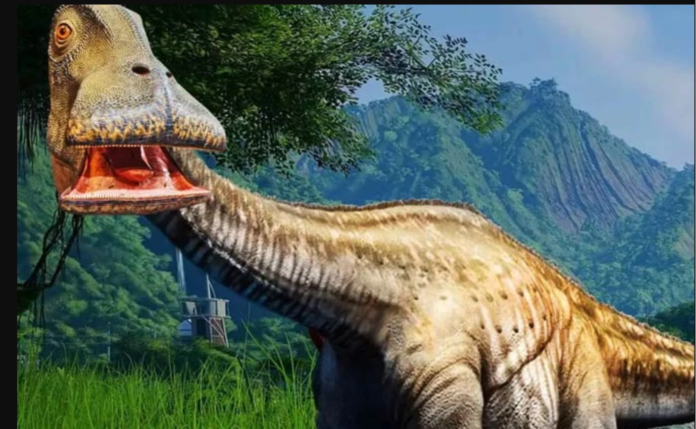The dinosaur with 500 teeth that you’ve probably never heard of is the Nigersaurus. This unique dinosaur roamed the Earth during the Late Cretaceous period, around 115 million years ago. It is believed to be one of the most bizarre and fascinating prehistoric creatures ever discovered.
First unearthed in the Republic of Niger in West Africa, the Nigersaurus was relatively small in size, measuring around 30 feet long and weighing approximately 4 tons. What set it apart from other dinosaurs was its unusual dentition, with its mouth hosting an astonishing 500 teeth.
The teeth of the Nigersaurus were incredibly unique and are what researchers find most intriguing about this dinosaur. Unlike other dinosaurs that had tightly packed, pointed teeth, the teeth of the Nigersaurus were more closely arranged, forming a wide, spoon-shaped structure. These teeth were perfectly adapted for grazing on low-lying vegetation.
The mouth of the Nigersaurus resembled a vacuum cleaner hose, with its wide and elongated shape allowing it to scoop up large amounts of plants. As it grazed, its teeth would move along the ground, stripping off vegetation from the surface. With each bite, new teeth would quickly replace any that were worn down or lost, maintaining a constant supply of functional teeth.
Another interesting aspect of the Nigersaurus is its skull structure. Its skull was light and delicate, consisting of thin, hollow bones. This adaptation allowed the dinosaur to have a relatively large head without increasing its overall weight. This lightweight structure likely helped the Nigersaurus efficiently forage for food, minimizing energy expenditure.
Despite its numerous teeth, the Nigersaurus was likely not a fierce predator. Instead, it was a gentle herbivore, spending most of its time grazing on plants. Its teeth indicate that it primarily fed on low-growing vegetation such as ferns, horsetails, and other leafy plants.
The discovery of the Nigersaurus has provided significant insights into the evolution and diversity of dinosaurs. Its unique dental arrangement and feeding adaptations have shed light on the various strategies used by dinosaurs to consume plant matter. It has also challenged previous assumptions about the diets and lifestyles of some dinosaur species.
Studying the Nigersaurus has proved challenging due to the scarcity of fossil remains. The first Nigersaurus skeleton was discovered in the 1990s, and subsequent expeditions have uncovered a limited number of additional specimens. However, with each new discovery, researchers gain a deeper understanding of this enigmatic dinosaur.
In conclusion, the Nigersaurus, with its 500 teeth and peculiar feeding adaptations, is a truly remarkable dinosaur that continues to captivate scientists and researchers. Its unique dentition and lightweight skull make it distinct among its prehistoric counterparts. Although it may not be as well-known as other dinosaurs, the Nigersaurus holds an important place in our understanding of dinosaur evolution and the diverse ways in which these ancient creatures adapted to their environments.

